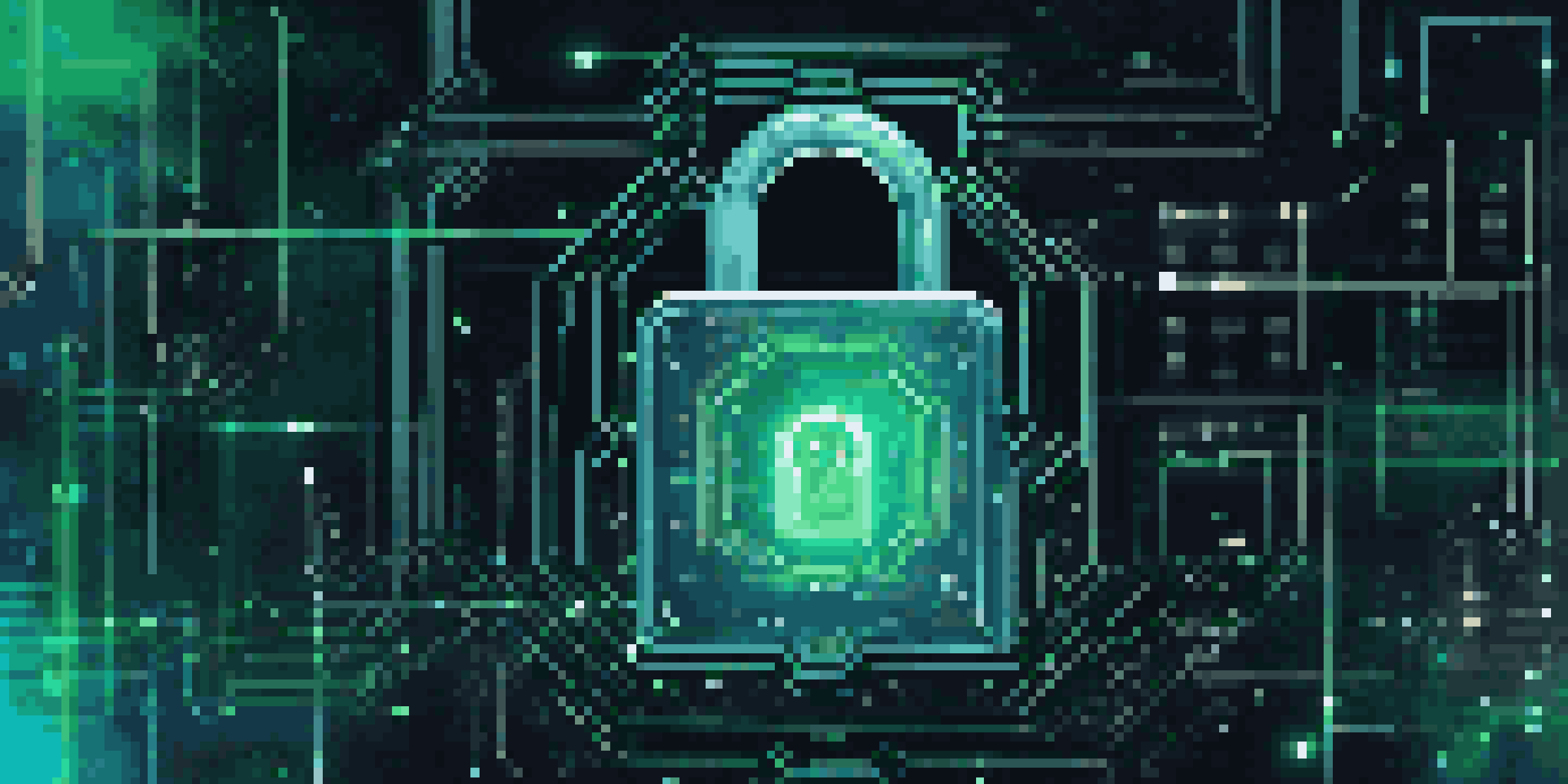The Impact of 5G on User Privacy and Security

Understanding 5G Technology and Its Capabilities
5G technology represents a significant leap from its predecessor, 4G, offering faster speeds and lower latency. This means that data can be transmitted almost instantaneously, enhancing user experiences across various applications. However, this rapid connectivity raises questions about how data is collected, shared, and stored, impacting user privacy.
The cost of privacy is the loss of freedom, and the cost of freedom is the loss of privacy.
The capabilities of 5G also enable a vast array of connected devices—from smart homes to autonomous vehicles. Each of these devices can communicate with one another, creating a 'smart ecosystem.' While this connectivity can enhance convenience, it also means more points of entry for potential security breaches, making user data more vulnerable.
Understanding the technology behind 5G is essential for grasping its implications on privacy and security. As 5G networks expand, so does the need for users to be aware of how their data is managed and protected by service providers.
The Expansion of IoT and Its Privacy Challenges
The Internet of Things (IoT) is set to explode with the rollout of 5G, connecting everything from wearables to home appliances. This interconnectedness can lead to more convenience but also poses significant privacy risks. Each connected device collects data, which, if not properly secured, can be accessed by malicious actors.

For instance, smart home devices often gather personal information to function optimally. If these devices are not secured, they can become entry points for hackers, leading to unauthorized access to personal data. The more devices we connect, the greater the risk of data leaks, raising concerns about who has access to this information.
5G Enhances Connectivity and Risks
The rapid speeds and low latency of 5G technology enable a vast array of connected devices but also increase vulnerabilities regarding user data privacy and security.
As users, it’s crucial to understand the implications of a more interconnected world. Ensuring that IoT devices have robust security measures in place can help mitigate these risks, but awareness and proactive steps are key in protecting personal information.
Data Encryption: A Key Player in Security
Data encryption is a fundamental aspect of keeping information secure, especially in the context of 5G. It involves converting data into a coded format that can only be read by authorized parties. As 5G networks grow, robust encryption methods become increasingly vital to protect user data from interception.
In an era of rapid technological advancement, understanding the implications of our digital footprint is crucial for safeguarding our privacy.
With the increase in data traffic facilitated by 5G, effective encryption can help safeguard sensitive information from cyber threats. For example, when sending personal information over a 5G network, encryption ensures that even if the data is intercepted, it remains unreadable to unauthorized users.
However, users should not rely solely on encryption. While it is essential, a comprehensive security strategy also includes regular software updates and awareness of potential vulnerabilities. Understanding how encryption works can empower users to take control of their data security.
User Consent and Data Collection Practices
With 5G's enhanced capabilities, the volume of data collected from users is likely to increase significantly. This raises important questions about user consent and how much control individuals have over their data. Users often agree to data collection policies without fully understanding what they entail, putting their privacy at risk.
For example, many apps request access to personal data, such as location or contacts, under the guise of improving user experience. However, this data can be stored and sold to third parties, often without the user’s explicit consent. Transparency in data collection practices is essential for building trust between users and service providers.
User Awareness is Crucial
As IoT devices proliferate, users must understand the implications of data collection and ensure robust security measures to protect their personal information.
Educating users about their rights regarding data collection can help them make informed decisions. It’s vital for individuals to read privacy policies and understand what they are consenting to, advocating for stronger regulations that protect user privacy.
The Role of Government Regulations in Data Security
Government regulations play a crucial role in ensuring that user privacy is protected in the age of 5G. Various laws and guidelines aim to establish standards for data protection, holding companies accountable for safeguarding user information. This regulatory framework can help mitigate the risks associated with increased connectivity.
For instance, regulations such as the General Data Protection Regulation (GDPR) in Europe set stringent guidelines on how companies must handle personal data. These laws empower users with the right to know what data is collected and how it is used, fostering a sense of control over their information.
As 5G technology evolves, it is imperative for governments to adapt regulations to address new challenges. Continuous dialogue between policymakers, tech companies, and consumers can lead to a safer digital environment, protecting user privacy in an increasingly connected world.
Cybersecurity Threats in the 5G Era
With the advent of 5G, the landscape of cybersecurity threats is evolving. The speed and capacity of 5G networks create new vulnerabilities that can be exploited by cybercriminals. For example, Distributed Denial of Service (DDoS) attacks could become more prevalent, overwhelming networks with traffic and disrupting services.
Moreover, as more devices connect to the network, each one represents a potential entry point for hackers. The increased interconnectivity can lead to cascading failures if one device is compromised, affecting entire systems and putting user data at risk. Understanding these threats is crucial for both users and service providers.
Regulations Essential for Protection
Government regulations are vital in establishing data protection standards, empowering users with rights to control their personal information amidst the 5G landscape.
To combat these threats, companies must invest in robust cybersecurity measures, including firewalls and intrusion detection systems. Users can also play a part by practicing good digital hygiene, such as using strong passwords and being cautious about the information they share online.
Future Perspectives: Balancing Innovation with Security
As we look to the future, the challenge will be balancing the incredible innovations offered by 5G with the need for user privacy and security. Technology will continue to advance, creating more opportunities for connectivity and efficiency. However, this progress should not come at the expense of user trust and safety.
For instance, while 5G can revolutionize healthcare with telemedicine and remote monitoring, it is essential to ensure that patient data remains confidential. Companies must prioritize security measures alongside technological advancements to foster trust among users and encourage adoption.

Ultimately, a collective effort from users, tech companies, and regulators will be necessary to navigate this landscape. By prioritizing security and privacy, we can harness the benefits of 5G while safeguarding what matters most: our personal information.